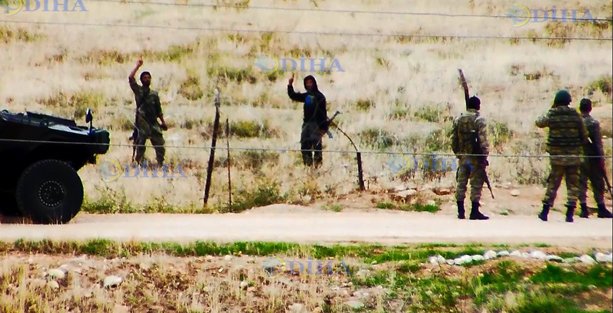February 05, 2015, Thursday/ 13:00:34
The United States sought to deploy V-22 planes used for search and rescue missions at a Turkish base close to Syria,
but Ankara balked at allowing the US to use its bases, a report said on Thursday.
The report, published in The Wall Street Journal (WSJ),
comes amid reports that the United Arab Emirates has withdrawn from flying air strikes in the US-led international coalition campaign against the Islamic State of Iraq and the Levant (ISIL) in Syria and Iraq due to complaints over the US search and rescue assets.
Citing US officials,
the WSJ said UAEofficials raised concern about the location of US search and rescue assets after the capture of Jordanian pilot Lt. Muath al-Kaseasbeh by ISIL.
His plane went down when he was on a bombing mission against ISIL targets in Syria in December.
ISIL recently released a video purportedly showing Kaseasbeh being burned alive in a cage.
The UAE officials had asked US officialsto position tilt-rotor V-22 Ospreys,
which are useful in rescues because they can take off like helicopters,
closer to Syria.
The V-22s are currently deployed in Kuwait.
The US has been reluctant to move the aircraft to northern Iraq given the fact that this would require the US military to send more forces to Iraq to protect them.
“The U.S. has also wanted to station the planes in Turkey,
but Ankara has balked at allowing the U.S. to use its bases,” WSJ said.
Turkey has condemned the gruesome killing of Kaseasbeh and says it supports the US-led coalition against ISIL.
But Ankara has refused to take actionother than agreeing to train moderate rebels in Syria in coordination with the US.
Reports this week said the UAE suspended its participation in coalition airstrikes after Kaseasbeh's capture because it felt the US military had not made plans to rescue pilots who were shot down.
A senior US defense official quoted in a report on Wednesday by The Washington Post, however, opposed the UAE view, saying that “combat search and rescue assets were available and were dispatched immediately” after the Jordanian's F-16 went down.
“They got as quickly as possible to the last known location” of the pilot, the official told The Washington Post.
“When they got to the location, he wasn't there. He had been picked up very quickly, almost immediately after the crash.”
The UAE now wants the Pentagon to establish better search-and-rescue capability in northern Iraq close to the battlefield,
including tilt-rotor V-22 Osprey aircraft, beforeresuming air strikes, according to Reuters.

This is a subscription only section
Want to read more? It's only €10/year.
Already have a subscription?Login
No subscription yet? Head to our shop
No account yet? Just Create an account first and head to the shop
Soviet Transports Database
By using this database, you agree to the following:
Nothing may be copied from this database without prior written permission from
the Soviet Transports team, for use in books, CD-ROMs, magazines or by any electronic means such as
publication on the Internet.
A lot of the information received for this database comes from official sources within the CIS.
This data was supplied strictly for use in the Soviet Transports database. Some sources can, and
will, take steps against anybody using information from this database, in order to protect their
interests. Additionally, this database is the result of decades of work, study, friendship,
travelling and donations by the ST team. It therefore would be absolutely unfair towards the
authors, the sources, and the fellow enthusiasts supplying information for use in the Soviet
Transports database to violate the copyright.
Please be warned that even simple checklists and all books containing information from this
database, as well as data distributed via the Internet, e-mail or any other electronic device can be
subject to legal action!
We realise this all sounds unfriendly but a database like this cannot be seen as just another
registration listing. Also in view of the massive copying of data from the printed "Soviet
Transports" books to commercial publications, we have no other choice. Those who want to copy
information need, and can, obtain written permission from the
editors.
Only when you can share knowledge
can you enjoy knowledge !
For many years, the editorial team of Soviet Transports has enjoyed collecting data, in close
co-operation with Scramble, to share with fellow enthusiasts. Making this unique database available
on line, free of charge without any limitations, is the best proof of above statement in our
opinion. For this reason we will continue, as we already have for many years, to update information
on a regular basis.






